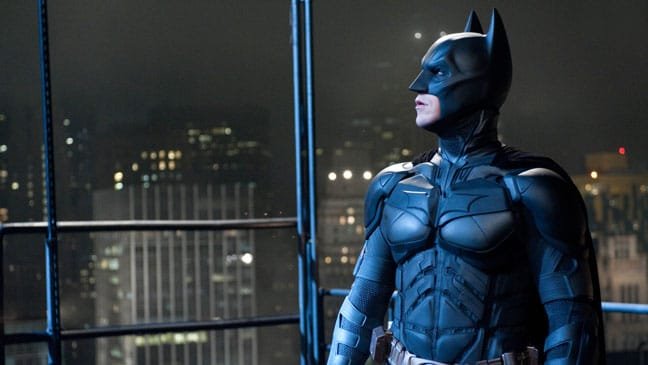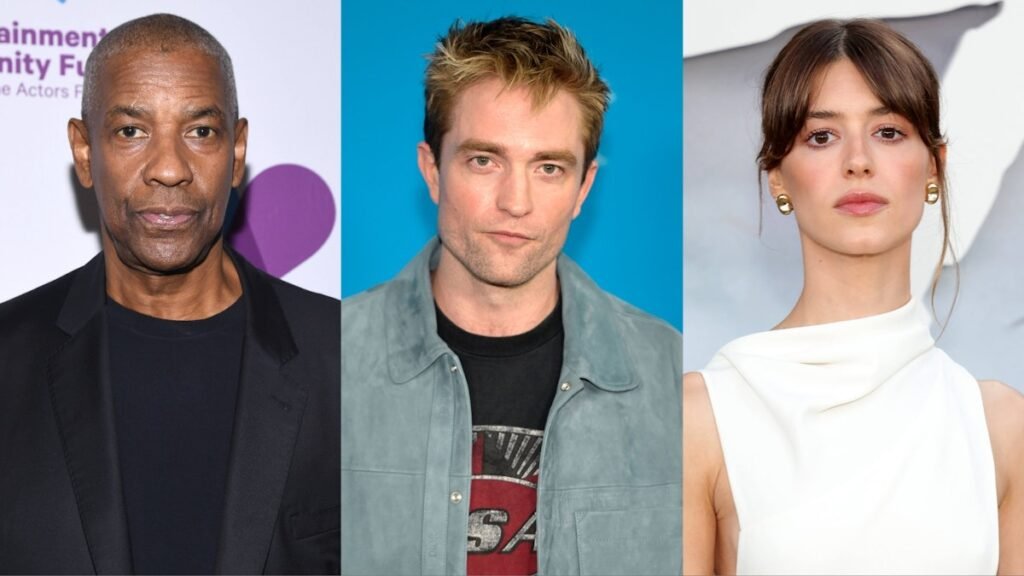
Great movies don’t just entertain — they define generations, reshape storytelling, and leave permanent imprints on culture. They spark conversations, inspire filmmakers, and often become benchmarks for excellence in cinema.
We analyzed impact, storytelling, craftsmanship, and cultural legacy to rank the films that truly changed the game. These aren’t just fan favorites — they’re cinematic milestones that redefined what movies could achieve.
From epic fantasies to groundbreaking dramas, here are the Top 10 Greatest Movies Ever Made, officially ranked by Omarex Media.
🔟 The Lord of the Rings: The Return of the King (2003)
🎥 The definition of epic.

When The Return of the King hit theaters on December 17, 2003, it wasn’t just the finale to Peter Jackson’s epic adaptation of Tolkien’s trilogy—it was a cinematic event that reshaped what fantasy filmmaking could achieve. After the success of The Fellowship of the Ring and The Two Towers, fans expected a thrilling conclusion, but what they got was a monumental achievement in storytelling, visual effects, and emotional resonance.
Jackson’s dedication to authenticity was legendary. The climactic Battle of Pelennor Fields alone took over 20 weeks to film, involving hundreds of extras, digital doubles, and intricate choreography. Every arrow shot, every clash of swords, and every fall of the enemy army was meticulously planned to create a sense of realism that audiences had never experienced before. Beyond the technical brilliance, the emotional stakes were high: Frodo and Sam’s journey, Aragorn’s ascension, and Gandalf’s guidance all converged in a finale that balanced spectacle with heart.
Our Experience: Watching Return of the King is like stepping into Middle-earth itself. The sweeping landscapes, detailed costumes, and unforgettable performances by Elijah Wood, Viggo Mortensen, and Ian McKellen immerse viewers completely. Emotionally, it’s a rollercoaster—from the tension of war to the quiet, reflective moments at the Shire. The film’s ability to make you feel invested in every character and storyline is unmatched.
Why #10: While it’s technically brilliant and emotionally resonant, its genre specificity slightly limits its cultural universality compared to other entries on this list. Still, as a fantasy epic, it’s the pinnacle of what large-scale storytelling can achieve in cinema.
Future Impact: Return of the King continues to inspire filmmakers and audiences alike, proving that fantasy can be more than escapism—it can be art, philosophy, and emotional truth. Its influence is visible in modern epic sagas and blockbuster filmmaking standards.
9️⃣ Pulp Fiction (1994)
🎥 Cool, chaotic, and culture-altering.

When Quentin Tarantino’s Pulp Fiction premiered at the Cannes Film Festival in May 1994, it stunned critics and audiences alike. Its non-linear narrative, sharp dialogue, and eclectic blend of crime, comedy, and drama marked a revolution in storytelling. Tarantino wasn’t just making a movie; he was creating a cultural artifact.
The film’s impact extended beyond its plot. John Travolta’s comeback as Vincent Vega, Samuel L. Jackson’s unforgettable Jules Winnfield, and Uma Thurman’s iconic Mia Wallace all became symbols of ‘90s pop culture. Every scene pulsates with tension, humor, and unpredictability. Behind the scenes, Tarantino’s insistence on real-time shooting, authentic dialogue, and homage to 70s cinema created a fresh yet nostalgically familiar world that audiences could both inhabit and dissect endlessly.
Our Experience: Pulp Fiction feels like a masterclass in cinematic rhythm. Each rewatch reveals hidden references, foreshadowing, and performance subtleties. The dialogue feels alive, almost as if the characters could step off the screen and start conversations in your living room. We personally found ourselves quoting lines and discussing scenes endlessly, proving its impact endures decades later.
Why #9: It’s innovative, stylish, and culture-defining, but its influence, while massive in film, is less global than the sweeping impact of some historical epics or universally themed films.
Future Impact: Pulp Fiction continues to influence directors, writers, and actors. Its signature storytelling style—non-linear, conversation-driven, and morally ambiguous—remains a template for indie and mainstream films alike.
8️⃣ The Dark Knight (2008)
🎥 A superhero film turned Shakespearean tragedy.

Released July 18, 2008, Christopher Nolan’s The Dark Knight transformed the superhero genre into something emotionally and thematically profound. No longer just popcorn entertainment, the film combined intense action with deep moral questions, political allegory, and unforgettable character work. Heath Ledger’s portrayal of the Joker redefined villainy, earning a posthumous Academy Award and forever imprinting the character on pop culture.
Beyond Ledger, the ensemble cast—Christian Bale, Aaron Eckhart, Maggie Gyllenhaal—delivered performances that humanized a world of chaos and moral ambiguity. Nolan’s use of IMAX cameras, practical effects, and complex narrative structure elevated the cinematic experience. The film’s themes—order vs. chaos, morality vs. pragmatism—resonate far beyond superhero fandom, inviting philosophical discussion and analysis.
Our Experience: Watching The Dark Knight is thrilling and introspective. Each scene is meticulously crafted, balancing action with character depth. The tension between Batman and the Joker keeps viewers on edge while also engaging them in a broader moral conversation. It’s rare for a blockbuster to demand both adrenaline and intellectual engagement—and this film does it seamlessly.
Why #8: While it revolutionized superhero cinema, its thematic reach is somewhat narrower than more universally resonant stories like The Godfather or Schindler’s List. Still, it elevated an entire genre to cinematic respectability.
Future Impact: The Dark Knight set a new bar for superhero films and blockbusters, inspiring countless franchises to strive for narrative and thematic depth while balancing spectacle.
7️⃣ Inception (2010)
🎥 A dream within a dream within cinematic brilliance.

When Christopher Nolan released Inception on July 16, 2010, it wasn’t just another sci-fi thriller—it was a mind-bending exploration of reality, memory, and dreams. Nolan had already built a reputation for intelligent, complex films like Memento and The Dark Knight, but Inception took his signature cerebral storytelling to unprecedented heights. The expectations were sky-high, with fans wondering if he could marry blockbuster spectacle with genuine intellectual depth. The answer? A resounding yes.
Inception introduced audiences to Dom Cobb (Leonardo DiCaprio), a skilled thief who enters people’s dreams to extract secrets, only to be pulled into a heist of a different kind: planting an idea in someone’s mind. The concept of “dreams within dreams” was risky, bordering on incomprehensible, yet Nolan’s meticulous structuring and storytelling clarity made it accessible without sacrificing complexity.
Production-wise, the film was a marvel. The zero-gravity hallway fight was achieved with a rotating set built in an aircraft hangar, allowing actors to perform stunts practically. Cities folded over themselves through groundbreaking visual effects, and Hans Zimmer’s iconic score, with its deep brass and ticking motifs, amplified the film’s tension and grandeur.
Our Experience: Experiencing Inception in theaters was electrifying. Every scene demanded attention; every dream layer forced viewers to actively think about time, causality, and consequence. It’s the kind of movie that sparks hours of post-film debate and theory-crafting. Personally, we’ve revisited it countless times, each viewing revealing new details, from Cobb’s emotional arc to the smallest visual cues that foreshadow events.
Why #7: Its innovation in narrative structure, combined with blockbuster spectacle, makes it unforgettable. It’s a perfect balance of intellectual engagement and visceral thrill, a rare achievement in modern cinema.
Future Impact: Inception has become a cultural reference point for layered storytelling, influencing everything from video games to television. Nolan set a new benchmark for how mainstream films can be complex without alienating audiences. Its themes of memory, loss, and redemption remain eternally relevant.
6️⃣ Vertigo (1958)
🎥 Haunting, hypnotic, and ahead of its time.

Alfred Hitchcock’s Vertigo premiered in 1958, a psychological thriller exploring obsession, love, and identity. At the time, audiences didn’t fully grasp its brilliance, and critics were divided. Over decades, however, it has risen to be regarded as one of cinema’s greatest achievements. Hitchcock wasn’t just telling a story—he was delving into human psychology and perception in ways no filmmaker had before.
James Stewart’s portrayal of Scottie Ferguson, a retired detective suffering from acrophobia, is both sympathetic and disturbing. Kim Novak’s enigmatic Madeleine/Kathie adds layers of mystery and sensuality. Their performances, paired with Bernard Herrmann’s haunting score, create an atmosphere that is simultaneously romantic, suspenseful, and unsettling.
Production Stories: Hitchcock’s use of the “Vertigo effect”—a combination of dolly and zoom shots—visually conveys the protagonist’s dizziness, creating a disorienting effect that mirrors his mental state. Filming was painstaking; sets, locations, and costumes were designed to evoke obsession and duplicity. Hitchcock’s meticulousness was legendary, and every frame of Vertigo reflects this devotion.
Our Experience: Watching Vertigo is like stepping into a dream—seductive, disorienting, and emotionally intense. The obsession, manipulation, and heartbreak resonate deeply, making it as much a study of human frailty as a suspense thriller. For us, its timeless style, psychological depth, and thematic richness justify its high ranking.
Why #6: Its influence on suspense, cinematography, and psychological storytelling is profound. Though slower-paced than modern thrillers, the emotional and visual power endures.
Future Impact: Vertigo continues to inspire filmmakers like Martin Scorsese and David Fincher. Its themes of obsession, identity, and manipulation remain relevant, and its visual techniques are still studied and emulated in film schools worldwide.
5️⃣ Schindler’s List (1993)
🎥 A sobering, powerful piece of history.

Steven Spielberg’s Schindler’s List premiered on December 15, 1993, and instantly redefined what historical cinema could achieve. Based on the true story of Oskar Schindler, a German industrialist who saved over 1,000 Jewish lives during the Holocaust, the film is unflinching in its depiction of human cruelty and courage.
Filmed primarily in black-and-white, with selective color for key emotional moments (like the girl in the red coat), Spielberg’s approach enhanced realism and emotional impact. The cast—Liam Neeson, Ben Kingsley, and Ralph Fiennes—delivered performances that are haunting and unforgettable. The film’s brutal honesty about the Holocaust, paired with Schindler’s moral journey, elevates it beyond conventional storytelling into something universally educational and emotionally transformative.
Our Experience: Watching Schindler’s List is a visceral, humbling experience. Its scenes stay with you long after the credits roll. Personally, it forced reflection on humanity, morality, and courage, leaving a permanent imprint. Its ability to educate while emotionally moving audiences is unparalleled.
Why #5: Its historical significance, emotional resonance, and craftsmanship make it essential viewing. While not universally light entertainment, its impact on culture and awareness of history is unmatched.
Future Impact: Decades later, Schindler’s List remains a benchmark for historical and biographical filmmaking. Its lessons on morality and human decency are timeless, and it continues to be used in educational contexts worldwide.
4️⃣ 2001: A Space Odyssey (1968)
🎥 Before Star Wars, there was this.

Stanley Kubrick’s 2001: A Space Odyssey premiered on April 2, 1968, and it wasn’t just a film—it was a revolution in cinema. At a time when science fiction was often relegated to B-movie territory, Kubrick elevated it to high art. The film wasn’t merely about space travel; it explored human evolution, artificial intelligence, and our place in the cosmos.
The production was legendary. Kubrick spent years researching NASA technology, zero-gravity effects, and futuristic set designs. The visual effects were groundbreaking, many of which remain impressive even today. The rotating centrifuge set used to simulate artificial gravity, the meticulously crafted spacecraft, and the “Star Gate” sequence all contributed to a sensory experience unlike anything audiences had ever seen.
Story & Themes: 2001 starts with the dawn of man and moves through deep space to the mysterious monolith orbiting Jupiter. HAL 9000, the AI aboard the Discovery One, remains one of the most iconic cinematic villains, exploring themes of trust, technology, and human fallibility. The film’s ambiguity, lack of conventional dialogue in key sequences, and slow, deliberate pacing challenge viewers to think deeply rather than passively consume.
Our Experience: Experiencing 2001: A Space Odyssey is meditative and awe-inspiring. Every scene feels meticulously crafted to evoke wonder. Personally, watching it for the first time felt like a journey into the unknown, where questions of existence, intelligence, and evolution became cinematic. The sense of scale—both visually and thematically—is unmatched, leaving viewers contemplating humanity’s place in the universe long after the film ends.
Why #4: It redefined science fiction, visual storytelling, and narrative structure. Unlike traditional action-packed blockbusters, it’s an intellectual and emotional experience, demanding engagement while delivering spectacle.
Future Impact: 2001 continues to inspire filmmakers, from Interstellar to Gravity, setting the standard for blending science, philosophy, and cinematic artistry. Its influence extends beyond film into technology, space exploration inspiration, and philosophical discourse. Kubrick’s masterpiece remains a timeless benchmark.
3️⃣ Citizen Kane (1941)
🎥 The blueprint.

Orson Welles’ Citizen Kane debuted on May 1, 1941, and immediately redefined filmmaking. Even though it faced controversy over its resemblance to William Randolph Hearst’s life, its innovation was undeniable. Welles didn’t just make a movie—he revolutionized how stories could be told on screen.
Technical Mastery: Deep focus cinematography, innovative lighting, and low-angle shots became hallmarks of the Welles style. The non-linear narrative, told through flashbacks, allowed viewers to piece together Charles Foster Kane’s life in a complex, nuanced way. Welles’ performance as Kane was both commanding and vulnerable, making audiences both admire and pity the character.
Story & Themes: Citizen Kane explores ambition, corruption, loss, and the human condition. Kane’s rise and fall mirror both personal and societal commentary on power, media influence, and the emptiness that can accompany material success. The film’s famous “Rosebud” mystery encapsulates the quest for meaning, innocence, and nostalgia—a narrative device studied for generations.
Our Experience: Watching Citizen Kane feels like witnessing the birth of modern cinema. Every angle, shadow, and line of dialogue is deliberate, teaching viewers about storytelling as much as entertaining them. Personally, it’s a reminder that film can be both art and message, blending technical innovation with profound human insight.
Why #3: Its influence is foundational. Every filmmaker owes a debt to Welles’ daring innovations. The film’s study of character, narrative, and visual technique remains relevant in contemporary cinema.
Future Impact: Citizen Kane is taught worldwide in film schools, studied for its narrative, cinematography, and thematic complexity. Its lessons continue to shape directors, cinematographers, and storytellers, making it timeless.
2️⃣ The Shawshank Redemption (1994)
🎥 The most beloved film of all time.

Frank Darabont’s The Shawshank Redemption premiered on September 23, 1994. While it initially underperformed at the box office, it has since become an enduring classic. Adapted from Stephen King’s novella Rita Hayworth and Shawshank Redemption, the film is more than a prison story—it’s a meditation on hope, friendship, and the resilience of the human spirit.
Story & Performances: Tim Robbins as Andy Dufresne and Morgan Freeman as Ellis “Red” Redding deliver performances that are both nuanced and iconic. Andy’s intelligence, patience, and quiet rebellion against injustice, combined with Red’s reflective narration, craft a narrative that feels both intimate and epic. The prison setting, while confining, becomes a canvas for exploring universal themes of freedom, morality, and redemption.
Production Stories: Filmed at the historic Ohio State Reformatory, the cast and crew endured long days, harsh weather, and physically demanding shoots to bring authenticity to Shawshank’s walls. Darabont’s dedication to character development and atmospheric tension made every scene resonate emotionally.
Our Experience: The Shawshank Redemption is the kind of movie that grows with you. Watching it as a teenager versus an adult brings entirely different insights. Personally, it’s an emotional anchor, reminding us of perseverance and hope, and the beauty of human connection even in the darkest circumstances.
Why #2: Its emotional resonance, narrative mastery, and timeless message make it universally relatable. Even decades after release, it remains one of the most uplifting and thoughtful films ever made.
Future Impact: The film’s themes of hope and resilience ensure it remains a go-to reference for filmmakers, educators, and audiences alike. Its influence on storytelling, particularly character-driven narratives, is profound and enduring.
🥇 The Godfather (1972)
🎥 The crown jewel of cinema.

Francis Ford Coppola’s The Godfather premiered on March 24, 1972, and instantly transformed American cinema. Adapted from Mario Puzo’s novel, it’s more than a gangster film—it’s an epic exploration of family, power, loyalty, and betrayal. Coppola’s meticulous direction, combined with a groundbreaking script and legendary performances, cemented its place as the gold standard of filmmaking.
Performances & Story: Marlon Brando as Vito Corleone is iconic, delivering a performance that is both commanding and subtle, filled with nuance and gravitas. Al Pacino’s transformation from Michael Corleone, the reluctant son, to the ruthless Don is one of cinema’s most compelling character arcs. The narrative seamlessly blends intimate family dynamics with sprawling criminal enterprise, creating tension, empathy, and awe simultaneously.
Production Stories: The production faced immense challenges, from casting controversies to budget constraints. Coppola fought tirelessly to maintain authenticity, insisting on Italian-American actors and a realistic portrayal of mafia life. The haunting score by Nino Rota, combined with Gordon Willis’ shadow-drenched cinematography, creates an atmosphere that is both timeless and immersive.
Our Experience: Watching The Godfather is an experience of total immersion. Every line, gesture, and shot feels intentional. For us, it’s a film that teaches patience, attention to detail, and storytelling mastery. Its influence on modern cinema, from dialogue delivery to pacing, is immeasurable.
Why #1: It’s the perfect convergence of acting, direction, writing, and music. Every element is crafted to perfection, making it the ultimate cinematic experience.
Future Impact: The Godfather continues to inspire filmmakers, writers, and artists. Its themes of loyalty, power, and family transcend the gangster genre, influencing television, film, and literature for decades. Its legacy is untouchable, remaining the benchmark for storytelling and cinematic excellence.
Final Thoughts
Cinema is subjective, and every fan has their own “greatest films” list. But these 10 masterpieces stand above the rest — each one transforming the art of storytelling and leaving an impact that time cannot erase.
Great films don’t just entertain — they define eras, inspire generations, and transform culture. From fantasy epics to intimate human stories, these ten movies are the gold standard of filmmaking. They set the benchmark for storytelling, craft, and cultural impact — and they’ll continue to inspire audiences for generations to come.
Which of these films is your number one? Did your favorite make the list? Drop your thoughts in the comments — the debate never ends.




